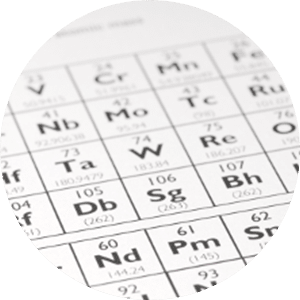CHEMISTRY
![]()
Chemical chameleon
 Chemistry is all around us. We use chemistry to describe the affection between two people in love, the reaction between two substances, the change that is happening while cookies are being baked...
Chemistry is all around us. We use chemistry to describe the affection between two people in love, the reaction between two substances, the change that is happening while cookies are being baked...
Halloween is a perfect time to explore chemical reactions. During the Halloween week students were able to improve their practical skills. Students were amazed by the variety of colours produced by the combination of a few substances.
Using the provided protocol, students measured substances needed for the experiment using digital scales. They used laboratory apparatus to make a solution that has an exact concentration and volume. Through this, the students practiced precision, one of the crucial skills needed for laboratory work. By mixing two components they made, they started a chemical reaction due to which the mixture changed colours, from purple to blue, through red and orange, finally turning a healthy yellow. The Halloween special included making a lava lamp, producing slime and catching carbon dioxide for heavy balloons.
Once again, the students saw that chemistry isn’t just some theoretical subject about particles that aren’t observable, but a colourful and fun science.
![]()
Learning through experiments and charades
 At the beginning of the school year, students completed a number of questionnaires in order to acquaint themselves as much as possible with their chemistry teacher Bojana Jurišić. The goal of the Your Voice Questionnaire was for Bojana to familiarise herself with her students and find out how they think. The where we are and where we want to be questionnaire enabled her to evaluate the kind of background knowledge students were entering her class with and thus adapt her teaching methods accordingly. In the end, the teacher and the students made an agreement that regulates the rights and obligations of both parties.
At the beginning of the school year, students completed a number of questionnaires in order to acquaint themselves as much as possible with their chemistry teacher Bojana Jurišić. The goal of the Your Voice Questionnaire was for Bojana to familiarise herself with her students and find out how they think. The where we are and where we want to be questionnaire enabled her to evaluate the kind of background knowledge students were entering her class with and thus adapt her teaching methods accordingly. In the end, the teacher and the students made an agreement that regulates the rights and obligations of both parties.
In order to show students how intertwined the sciences really are and that everything can in one way or another be traced back to chemistry, the chemistry teacher brought different everyday objects like copper bracelets, pencils, plastic toys, shells, eye shadows, etc. to her lesson. She then explained the different characteristics of each object.
That way, students learned the connection that chemistry shares with biology, geography, philosophy as well as other sciences which were explored in more detail during the lessons on the atmosphere and the hydrosphere. Students also watched a movie about space and answered questions like “what is space made of?, what is the structure of space?, what is science?, what is the role of science?” while listening to the instrumental version of Bohemian Rhapsody.
Laboratory experiments are a common way to both acquire and test one’s knowledge in practice, which is how chemistry surpasses the use of paper and truly comes to life. Experiments are an excellent way to warm students up to the subject matter and to demonstrate how chemistry knowledge is not just an academic requirement but a useful life skill.
Another creative activity conducted in our chemistry lessons was an association game where students had to explain a lab dish or a piece of lab equipment to their peers by using keywords and miming. The idea was to have students work in pairs whereby they would take turns in guessing the term their partner was describing for 30 seconds. In the first round, they were allowed to describe the terms by any means necessary except through the use of root words. In the second round, they were only allowed to say one key word that was supposed to help their partner figure out the term in question. In the third round, students had to mime the word.
This is a good way to spark student creativity, competitiveness, resourcefulness and bring them together through games while knowledge is smoothly acquired throughout.
Such unique and creative teaching techniques help bring down the wall that often stands between students and teachers and in the way of efficient learning. They also help establish a sense of mutual trust, respect and familiarity between students and their teacher. This was just another example of how learning can take place in a different way through games and mental challenges instead of the classical ways like rote learning and drill assessments.


















